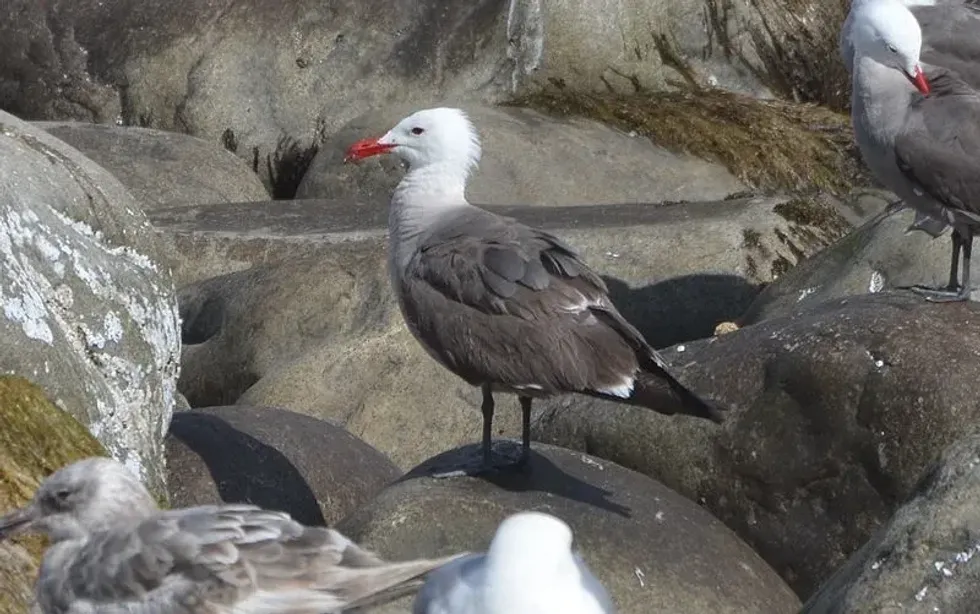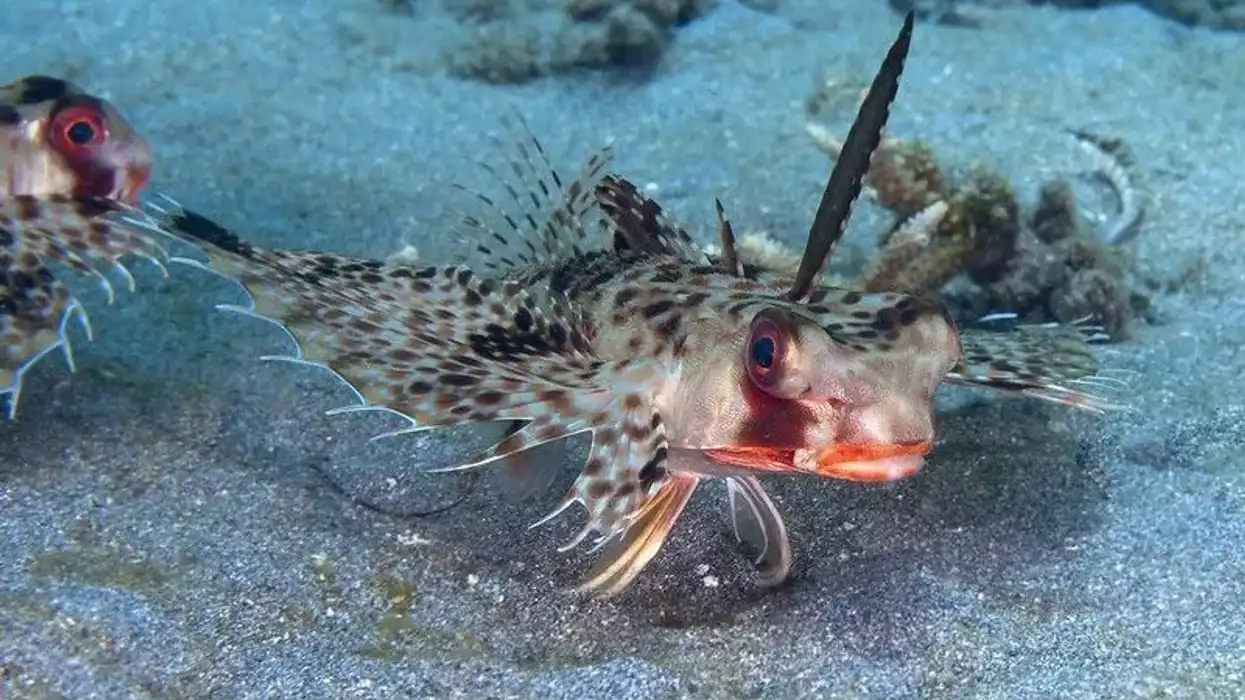If you see a gray bird in description on the beach islands off the coast of California and other North American states, then you are in the range of some of the most popular terns around - the Heerman's gull.
This bird is also in shades of brown and other dull colors, so you can expect some range in their shades.
These terns are born on beaches, staying close to the beach and the water for the rest of their life. Even when breeding adults come together for migration, or have calls to breed, you will see them coming back to beaches.
They have a range all across North America, and with their brown, gray, and other colors, can easily blend into the environment, hiding from predators.
If you want to know about these terns, particularly the Heermann's gull ages, Heermann's gull winter and when they breed, immature Heermann's gull flight and migration, and the Heermann's gull Arizona habitat, then do not forget to read on!
You can also check out a unique bird breed like the cockatoo, as well as the blue jay, for their description, calls, and much more!
Heermann's Gull Interesting Facts
What type of animal is a Heermann's gull?
Heermann's gull, Larus heermanni, is a type of bird.
What class of animal does a Heermann's gull belong to?
These species belong to the order Charadriiformes (family: Laridae), and the class is birds.
How many Heermann's gulls are there in the world?
The population of Heermann's gulls is large, but its trends are unclear. Partners in Flight reported that the total breeding population is 350,000 pairs, up from 55,000 pairs in 1975. Heermann's gull yearly migration occurs in late summer.
Where does a Heermann's gull live?
These gulls make their nest on Isla Rasa (Mexico), a rocky island in the Gulf of California (Sea of Cortez) with minimal vegetation. A few couples of Heermann's gull have their habitat in California beside dredge-spoil islands.
What is a Heermann's gull's habitat?
These gray North American birds have a buoyant flight. The Heermann's gull habitat is in the wetlands and they forage with pelicans, terns, and sea lions on beaches and ocean waters, typically within sight of the mainland. Islands, sea cliffs, headlands, and beaches are also in its range.
Who do Heermann's gulls live with?
Coastal birds, the Heermann gulls build nests on the ground to lay their eggs. They roost in big flocks but fly in tiny groups or by themselves.
How long does a Heermann's gull live?
In the wild, Heermann's gull (Larus heermanni) live for about 24 years. The average lifespan of a seagull is roughly 20 years.
How do they reproduce?
The breeding season for these gulls is in the springtime, and they breed in vast groups on islands near the coast of Mexico. On the breeding grounds, the breeding adult builds its nest. These gulls can use sticks, feathers, and small rocks to construct the nest.
Female produces two to three eggs with dark markings and a variety of hues. The immature Heermann's gull is fed by both adults. These species reproduce a single brood per season.
What is their conservation status?
The conservation status of these gray North American birds with the red bill, which belongs to the Laridae family, is listed Near Threatened by IUCN Red List.
Heermann's Gull Fun Facts
What do Heermann's gulls look like?
The adult Heermann's gull is one of the most quickly identifiable gulls of North America. Unlike any other species because of its uniformly light gray belly, dark gray wings and back, black-tipped red bill, and black feet and legs.
The head is white during the summer season; in winter, the Heermann's gull gray head is mottled by a dark hue.
The immature ones follow non-breeding adults, and their bill color is pink until the second winter. After that, the juvenile Heermann's gull is consistently dark brown. It takes four years for Heermann's gull juvenile birds to develop the colors of adults.
How cute are they?
These gulls that nests at the coast can be cute, with their red bill, in particular males with their distinct head colors.
How do they communicate?
Outside the nesting grounds (breeding grounds), the Heermann's gull call is deafeningly quiet. These gulls, which head is dark gray during non-breeding plumage and whitish in breeding plumage, have a nasal, high-pitched call.
How big is a Heermann's gull?
This coastal Heeramann bird's length measures up to 18.1-20.9 in (46-53 cm). The ring-billed gulls are about 16.9-21.3 in (43-54.1 cm) long. The Heermann birds are larger than ring-billed gulls.
How fast can a Heermann's gull fly?
The Heermann's gull flight is buoyant, with continuous quick wing beats. Thousands of Heermann's gulls migrate north along the Pacific Coast every summer from their breeding sites in western Mexico.
How much does a Heermann's gull weigh?
The weight of an adult bird is between 13.1-22.7 oz (371.3-643.5 g). They can show aggressive behavior and may attempt to take fish directly from the sacks of brown pelicans.
What are the male and female names of the species?
The male and female of these birds belong to the order Charadriiformes (family: Laridae), and migration occurs along the Pacific coast. The different sexes don't have any special names.
What would you call a baby Heermann's gull?
The baby of this bird (of which males have a dark gray head in winter with the red bill), mostly with floating flight, has no particular title.
What do they eat?
The Heermann's gull diet includes small fish, marine creatures, eggs (especially of terns), lizards, insects, refuse, and carrion. It feeds by picking food from the surface, although it will dip into the water if it sees fish.
This bird that forages with pelicans catches small fish near the top surface by hovering and dipping on the waves. Brown pelicans, royal, and elegant terns are kleptoparasites of these birds.
Are they poisonous?
These coastal birds of Mexico gull Heermann's that belong to the order Charadriiformes (family: Laridae) are not poisonous.
Would they make a good pet?
Federal and state laws preserve all wild birds, except for exotics. Harming them in any manner is prohibited. (Local hunting rules govern the taking of game birds.) Keeping wild birds as pets are likewise prohibited. It is not recommended to maintain this bird in captivity because of its near-threatened conservation status.
Did you know...
The little gull is the world's tiniest gull. A few couples have been nesting throughout North America, and they've been seen on the East coast. However, the great black-backed gull, the world's largest gull, is the ruler of the Atlantic waterfront.
The Wildlife and Countryside Act 1981 and the Wildlife Order 1985 protect all gull species. This makes it unlawful to intentionally or carelessly kill or injure any gull or destroy or damage an operational nest or its supplies in Ireland and Scotland.
The term 'seagull' is essentially a colloquial term for any gull species that belongs to the Laridae family. Thus, the seagull is a generic term for several different species.
Seagulls have a high level of intelligence and aggressive behavior (can try to steal fish from the pouch of brown pelicans). They utilize bread crumbs to lure fish, and they use their feet and make a rain-like noise to attract earthworms concealed beneath the ground.
All of a seagull's hunting abilities and strategies are passed down to its progeny. Seagulls are notorious for stealing food from other birds, creatures, even humans.
When you think about the Heermann's gull predator, only one name comes to mind. It is the yellow-footed gulls.
Do Heermann's gulls migrate?
These birds (family: Laridae) of Mexico migrate in an uncommon 'backwards' pattern, breeding mostly south of the United States and migrating north along the Pacific coast during the nonbreeding season. Then, when the nesting season ends in summer, the gulls travel north, all the way through southern Canada.
How did Heermann's gulls get their name?
This North American species, Heermann's gull, range is in the United States, and Mexico, mostly all nesting at Isla Rasa. Adolphus Lewis Heermann, a 19th-century adventurer and naturalist, is the origin of the species' name.
Here at Kidadl, we have carefully created lots of interesting family-friendly animal facts for everyone to discover! For more relatable content, check out these pheasant facts and stork facts for kids.
You can even occupy yourself at home by coloring in one of our free printable Heermann's gull coloring pages.










